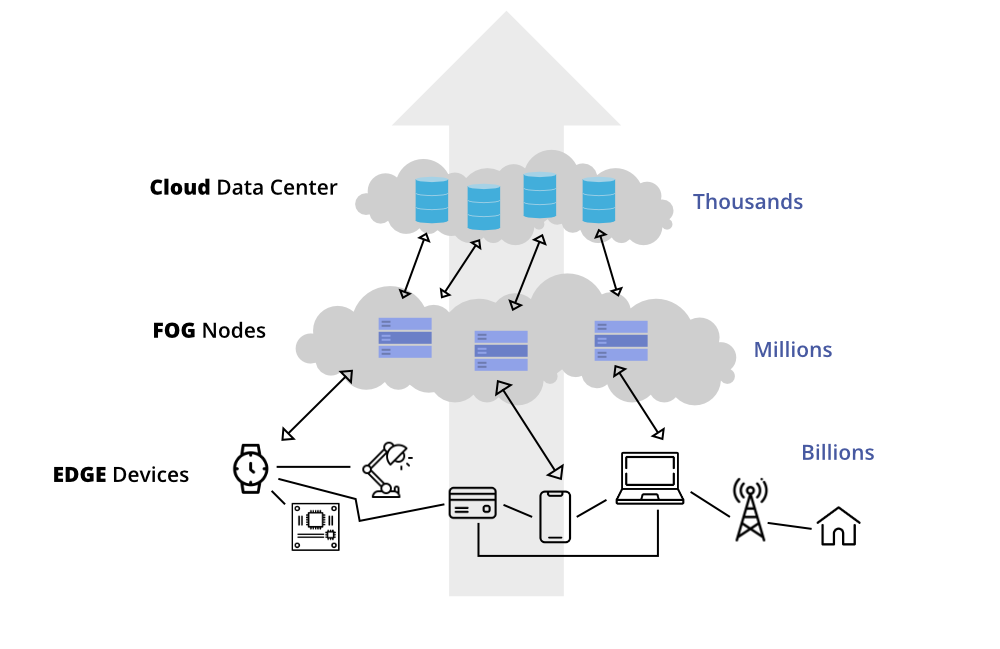What is cloud and edge computing?
School | College | University
Cloud computing and edge computing are two distinct paradigms for processing and storing data in the world of IT and technology. They serve different purposes and have their own advantages and use cases.
Cloud Computing:
Cloud computing refers to the practice of using remote servers, often hosted on the internet, to store, manage, and process data and applications rather than relying on local servers or personal computers. In cloud computing, resources such as servers, storage, databases, networking, software, and more are delivered as services over the internet.
Here are some key characteristics of cloud computing:
- Scalability: Cloud services can be easily scaled up or down to meet changing demands. This means you can allocate more resources when needed and release them when demand decreases.
- Accessibility: Cloud services can be accessed from anywhere with an internet connection, making it convenient for users and businesses to access their data and applications.
- Cost-Efficiency: Users pay for the resources they use on a pay-as-you-go basis, which can be cost-effective compared to maintaining and managing on-premises hardware.
- Reliability: Cloud providers typically offer high levels of redundancy and reliability, ensuring that data and services are available even in the event of hardware failures.
- Security: Cloud providers invest heavily in security measures to protect data, but users are still responsible for implementing their own security controls and policies.
Examples of popular cloud providers include Amazon Web Services (AWS), Microsoft Azure, Google Cloud Platform (GCP), and many others.

Edge Computing:
Edge computing, on the other hand, is a decentralized computing paradigm that brings computation and data storage closer to the location where it is needed, typically at or near the "edge" of the network.
Here are some key characteristics of edge computing:
- Low Latency: Edge computing reduces the latency (delay) in processing data by processing it closer to the source. This is crucial for applications that require real-time or near-real-time responses, such as autonomous vehicles and industrial automation.
- Bandwidth Efficiency: By processing data locally, edge computing reduces the need to transmit large amounts of data to centralized data centers, saving bandwidth and reducing network congestion.
- Privacy and Security: Some data may be sensitive and should not be transmitted to a centralized cloud. Edge computing allows for local processing of sensitive data, improving privacy and security.
- Scalability: Edge computing can be scaled by deploying more edge devices or nodes as needed, making it suitable for distributed applications.
- Robustness: Edge devices can continue to operate even when disconnected from the central cloud, ensuring the availability of critical services.
Edge computing use cases include autonomous vehicles, industrial IoT, smart cities, and applications that require low-latency processing, such as augmented reality and virtual reality.

Summary:
In summary, cloud computing centralizes resources in remote data centers accessible over the internet, while edge computing decentralizes processing and storage closer to where data is generated or consumed, reducing latency and improving performance for specific applications. The choice between cloud and edge computing depends on the specific requirements and constraints of a given use case.

Start your Journey with us
Manage your Schools & Colleges with LoginX ERP
LoginX ERP, An integrated cloud-based solution for Institutions like schools, colleges & universities to automate daily operations, generate reports, and make better and accurate decisions with ease. LoginX ERP bundled with interface like :Digital Payment, SMS, Web Portal, Smart Card, Barcode, Mobile App, RFID / Biometric & Logins for Management / Parent / Student / Staff.
- Cloud-based, all-in-one school record management system
- A robust, highly intuitive platform connecting all
- All-inclusive tracker for student information & reports
- Real-time attendance and fee management system
- Seamless exam and result management system
Cloud-Based School Management Software Cloud-Based school ERP LoginX Cloud-Based school management system LoginX Cloud-Based LoginX ERP for education Cloud-Based school & college ERP LoginX Cloud-Based+AI school management software Cloud-based education software Cloud-Based+AI ERP for schools and colleges Cloud-Based student management system Cloud-Based ERP for academic institutions Cloud-Based software for educational institutions
